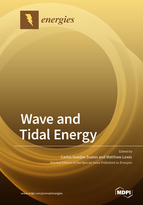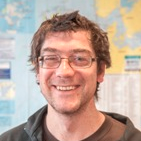Wave and Tidal Energy
A special issue of Energies (ISSN 1996-1073).
Deadline for manuscript submissions: closed (31 August 2018) | Viewed by 44093
Special Issue Editors
Interests: wave energy; resource assessment; wave modelling; wave energy converters; array design; installation planning; economic feasibility studies
Special Issues, Collections and Topics in MDPI journals
Interests: physical oceanography; coastal hydrodynamics; numerical modelling; tides and storm surges; coastal flood risk; climate change; marine renewable energy; inundation modelling; earth-system processes
Special Issues, Collections and Topics in MDPI journals
Special Issue Information
Dear colleagues,
Concerns of energy supply and climate change has driven renewable energy targets around the world. Marine renewable energy could make a significant contribution to reducing greenhouse gas emissions and mitigating consequences of climate changes, as well as providing a high-technology industry. The conversion of wave and tidal energy into electricity has many advantages. Individual tidal and wave energy devices have been installed and proven, with commercial arrays planned throughout the world. The wave and tidal energy industry has developed rapid in the past few years and it seems timely to therefore review current research and map future challenges. Methods to improve understanding of the resource and interactions (between energy extraction, the resource and the environment) are welcomed; such as resource characterization (including electricity output), design considerations (e.g. extreme and fatigue loadings) and environmental impacts, at all timescales (ranging from turbulence to decadal) and all spatial scales (from device and array scales to shelf sea scales).
Prof. Carlos Guedes SoaresDr. Matthew Lewis
Guest Editors
Manuscript Submission Information
Manuscripts should be submitted online at www.mdpi.com by registering and logging in to this website. Once you are registered, click here to go to the submission form. Manuscripts can be submitted until the deadline. All submissions that pass pre-check are peer-reviewed. Accepted papers will be published continuously in the journal (as soon as accepted) and will be listed together on the special issue website. Research articles, review articles as well as short communications are invited. For planned papers, a title and short abstract (about 100 words) can be sent to the Editorial Office for announcement on this website.
Submitted manuscripts should not have been published previously, nor be under consideration for publication elsewhere (except conference proceedings papers). All manuscripts are thoroughly refereed through a single-blind peer-review process. A guide for authors and other relevant information for submission of manuscripts is available on the Instructions for Authors page. Energies is an international peer-reviewed open access semimonthly journal published by MDPI.
Please visit the Instructions for Authors page before submitting a manuscript. The Article Processing Charge (APC) for publication in this open access journal is 2600 CHF (Swiss Francs). Submitted papers should be well formatted and use good English. Authors may use MDPI's English editing service prior to publication or during author revisions.
Keywords
- wave energy
- tidal energy
- ocean energy devices
- control of ocean energy devices
- materials for ocean energy devices
- structural design of ocean energy devices
- multiuse platforms resource assessment
- array design
- PTO design
- grid connection
- economic assessment
- installation planning
- maintenance planning







